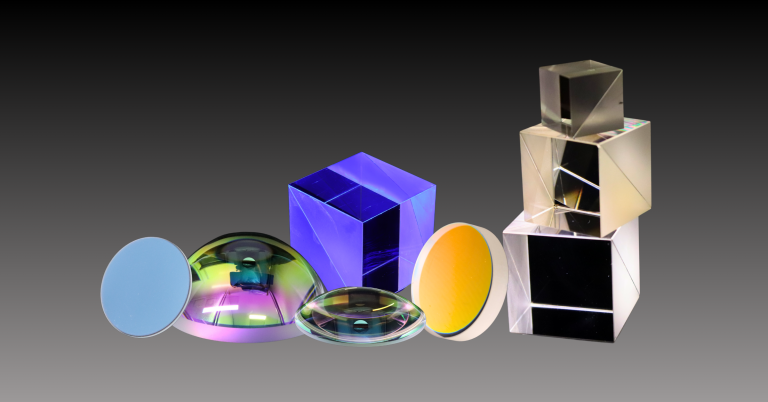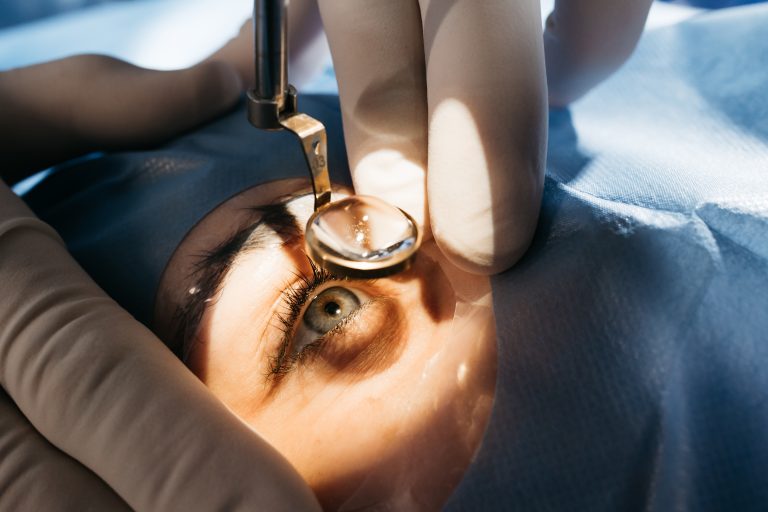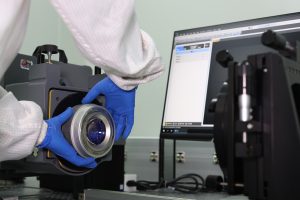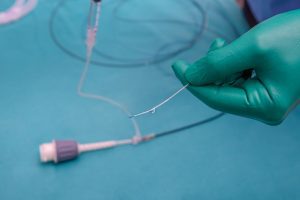Key Takeaways
- Laser surgery relies on precise optics to direct high-intensity light for minimally invasive procedures.
- Various lasers, like Argon and CO2, target specific tissues through different absorption wavelengths, enabling cutting, coagulation, or vaporization.
- Custom optics, including mirrors and lenses, ensure accurate beam delivery.
- Femtosecond lasers, guided by OCT, revolutionize cataract surgery by precisely fragmenting clouded lenses.
- This technology underscores the critical role of tailored laser optics in advancing medical treatments.
Laser optics for surgery enable medical professionals to perform ultra-precise, minimally invasive surgical procedures. Laser, which stands for ‘Light Amplification by Stimulated Emission of Radiation, involves generating a high-intensity beam of monochromatic, coherent light with a pre-determined wavelength. Laser energy may produce heat, cut, or sculpt; and laser surgery can be used to revive or revascularize dying tissue, to remove abnormal tissue, to close small blood vessels, or to perform careful incisions.
How does laser tissue interaction accomplish all of that, and what optical components are involved in the process? Here we’ll provide a brief overview of the laser optics behind surgical advances, and then focus on one particular type of laser surgery used for treating cataracts.
Laser Optics for Surgery
Laser optics for surgery include far more than just the laser source itself. Precision mirrors, lenses, windows, prisms, and optical filters play important roles in guiding the laser beam to target tissue and ensuring ultimate control throughout the process. These optical components can be custom made to theft the specific procedure requirements and specific laser wavelengths.

The laser wavelength used will depend on the tissue being treated and the procedure that will be performed. Laser types commonly used for eye procedures include:
- Argon Lasers (70% blue (488 nm) and 30% green(514nm))
- Absorbed selectively by hemoglobin pigments, by choriocapillaries, at the inner and outer nuclear layer of the retina and at the retinal pigment epithelial layer
- Frequency-doubled Nd-YAG Lasers (532 nm)
- Well absorbed by hemoglobin and melanin
- Krypton Red Lasers(647 nm)
- Passes through hemoglobin, preferentially absorbed by melanin
- Diode Lasers (805-810 nm)
- Absorbed well by melanin; enables deep penetration into the retina
All four of these lasers cause a temperature rise in the tissue, resulting in the denaturation of proteins and photocoagulation. Another laser often used in surgical applications, the carbon dioxide laser (10,600 nm), can be used to cause photovaporization as intracellular and extracellular water is vaporized by the light absorbed by the target tissue. CO2 gas lasers penetrate water to a depth of just 0.15, which enables high precision incisions to be performed with very little thermal damage.
Laser surgery is not the only application of laser light in medical practice. Photodynamic therapy is also typically accomplished with lasers, but here the first step of the process is treatment of the patient with a special medicine called a photosensitizer. In cancer treatment, this photosensitizer is absorbed by cancerous and precancerous cells, and. When activated by laser light becomes toxic to the cell. This treatment is particularly useful because it catalyzes the patient’s own immune response against the cancer or precancerous cells as well.
Cataract Surgery with Femtosecond Lasers
The primary ocular disease is cataract; a simple but potentially devastating condition in which discolored pigment or protein clumps in the lens block light from the retina. This condition can be treated by removing the cloudy lens and inserting an IOL, an artificial interocular lens, but removing the clouded lens is a delicate procedure that requires the utmost control. Today, many cataract surgeries are accomplished by ultrafast lasers that break up the clouded lens to allow removal and insertion of the IOL.

The laser used is typically a solid-state femtosecond laser;, a neodymium-doped yttrium aluminum garnet (ND YAG), erbium-doped YAG (Er: YAG) or titanium sapphire (Ti:Sapphire). Pulses may range from 100fs (short pulse) to 1000 fs. Focusing optics, guided by optical coherence tomography (OCT) systems, are used to provide precise and accurate control of the lasers. Typically the laser light is propagated through galvanometric mirrors, then through a beamsplitter which redirects a portion to the OCT. An aspheric lens concentrates the remaining portion of the beam for effective fragmentation of the target tissue.
Laser Optics for Surgery at Avantier
At Avantier we produce custom high quality laser optics designed for surgery as well as research applications. Whether you need specialized calcium fluoride prisms for your excimer laser, cover windows for a diode laser, or an entire surgical laser system designed from scratch, we have you covered. Contact us today for your next project.
References
- Boyd, Kierstan. Laser Eye Surgery. American Academy of Ophthalmology, Published Feb 05, 2025.
- Nitesh Katta, Arnoldo D. Estrada, Austin B. McErloy, and Thomas E. Milner, “Fiber-laser platform for precision brain surgery,” Biomed. Opt. Express 13, 1985-1994 (2022).
- Plamann, Karsten et. al. Ultra shortpulse laser eye surgery uses fiber technology at 1.6 microns. SPIE. The International society for optics and photonics.
GREAT ARTICLE!
Share this article to gain insights from your connections!
- Resources (8)
- Application Note (32)
- Case Study (48)
- Aspheric Lens (5)
- Customized Imaging Lens (7)
- IR lens (4)
- Large Optics (2)
- Micro Optics (2)
- Microlens Arrays (1)
- Microscope Objective Lens (7)
- OAP Mirrors (2)
- Optical Domes (2)
- RC Telescopes (1)
- Reverse Engineering (2)
- Scan Lens (1)
- Silicon Carbide Optics (1)
- Knowledge Center (93)
- Technical Article (58)







